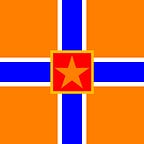Multigraphs are passable for my Phonetic Alphabet
A multigraph (or pleograph) is a sequence of letters that behaves as a unit and is not the sum of its parts, such as English ⟨ch⟩ or French ⟨eau⟩. The term is infrequently used, as the number of letters is usually specified:
Digraph (two letters, as ⟨ch⟩ or ⟨ea⟩)
Trigraph (three letters, as ⟨tch⟩ or ⟨eau⟩)
Tetragraph (four letters, as German ⟨tsch⟩)
Pentagraph (five letters)
Hexagraph (six letters)
Heptagraph (seven letters)
Combinations longer than tetragraphs are unusual. The German pentagraph ⟨tzsch⟩ has largely been replaced by ⟨tsch⟩, remaining only in proper names such as ⟨Poenitzsch⟩ or ⟨Fritzsche⟩. Except for doubled trigraphs like German ⟨schsch⟩, hexagraphs are found only in Irish vowels, where the outside letters indicate whether the neighboring consonant is “broad” or “slender”. However, these sequences are not predictable. The hexagraph ⟨oidhea⟩, for example, where the ⟨o⟩ and ⟨a⟩ mark the consonants as broad, represents the same sound (approximately the vowel in English write) as the trigraph ⟨adh⟩, and with the same effect on neighboring consonants.
Says Wikipedia. But did you know that Multigraphs can, and have been used to fill sounds? So I decided to Make Multigraphs for my Phonetic Alphabet! Learn the Basic Summary Here, Then Read this Article to learn all the Monographs!
Note, if /ː/ is used In-between in the Consonants in the Consonant Multigraphs, Then the Consonants doesn’t make a Multigraph.
Plosives
- /p̪/ — Combine /b/ and /p/
- /b̪/ — Combine /b/ and /b/
- /p͆/ — Combine /p/ and /t/
- /b͆/ — Combine /p/ and /d/
- /t̼/ — Combine /t/ and /t/
- /d̼/ — Combine /t/ and /d/
- /ṯ/ — Combine /d/ and /t/
- /ḏ/ — Combine /d/ and /d/
- /ʈ/ — Combine /k/ and /t/
- /ɖ/ — Combine /k/ and /d/
- /c/ — Combine /tʃ/ and /j/
- /ɟ/ — Combine /dʒ/ and /j/
Nasals
- /m̥/ — Combine /ʔ/ and /m/
- /ɳ/ — Combine /n/ and /ŋ/
- /ɲ/ — Combine /nj/ and /j/
- /ɴ/ — Combine /ŋ/ and /ŋ/
Trills
- /ʙ̥/ — Combine /p/ and /p/
- /ʙ/ — Combine /p/ and /b/
- /r̥/ — Combine /h/ and /r/
- /ʀ̥/ — Combine /k/ and /r/
- /ʀ/ — Combine /g/ and /r/
- /ʜ/ — Combine /x/ and /r/
- /ʢ/ — Combine /ʕ/ and /r/
Taps and Flaps
- /ⱱ/ — Combine /l/ and /v/
- /ɾ/ — Combine /ɹ/ and /d/
- /ɽ/ — Combine /ɹ/ and /l/
Fricatives
- /θ̼/ — Combine /f/ and /l/
- /ð̼/ — Combine /v/ and /l/
- /s̪/ — Combine /f/ and /s/
- /z̪/ — Combine /v/ and /z/
- /ɕ/ — Combine /ʃ/ and /j/
- /ʑ/ — Combine /ʑ/ and /j/
- /ç/ — Combine /ʃ/ and /x/
- /ʝ/ — Combine /ʒ/ and /x/
- /ɣ/ — Combine /x/ and /ʕ/
- /χ/ — Combine /x/ and /ħ/
- /ʁ/ — Combine /ɢ/ and /ħ/
- /ɦ/ — Combine /ʕ/ and /ħ/
Lateral Fricatives
- /ɬ/ — Combine /ʃ/ and /l/
- /ɮ/ — Combine /ʒ/ and /l/
Approximants
- /ʋ/ — Combine /w/ and /v/
- /ð̞/ — Combine /l/ and /ɹ/
- /ɹ̥/ — Combine /h/ and /ɹ/
- /ɥ/ — Combine /j/ and /w/
- /ʍ/ — Combine /h/ and /w/
- /ɰ/ — Combine /w/ and /l/
Lateral Approximants
- /ʎ/ — Combine /l/ and /j/
- /ʟ/ — Combine /ʕ/ and /l/
Affricates
- /pɸ/ — Combine /p/ and /ɸ/
- /bβ/ — Combine /b/ and /β/
- /p̪f/ — Combine /p/ and /f/
- /b̪v/ — Combine /b/ and /v/
- /t̪θ/ — Combine /t/ and /θ/
- /t̪ð/ — Combine /t/ and /ð/
- /ʈʂ/ — Combine /ʃ/ and /tʃ/
- /ɖʐ/ — Combine /ʒ/ and /dʒ/
Lateral Affricates
- /tɬ/ — Combine /tʃ/ and /l/
- /dɮ/ — Combine /dʒ/ and /l/
Implosives
- /ɓ/ — Combine /m/ and /b/
- /ɗ/ — Combine /n/ and /d/
- /ᶑ/ — Combine /ɹ/ and /d/
- /ʄ/ — Combine /ŋ/ and /j/
- /ɠ/ — Combine /ŋ/ and /g/
- /ʛ/ — Combine /ŋ/ and /ɢ/
Suprasegmentals
- /’/ — Combine /ʔ/ and /◌̆/
- ˑ — Combine /ː/ and /◌̆/
Articulation
- /◌ʷ/ — Combine /w/ and /◌̆/
- /◌ʲ/ — Combine /j/ and /◌̆/
- /◌ˠ/ — Combine /x/ and /◌̆/
- /◌ˁ/ — Combine /ʕ/ and /◌̆/
- /◌̃/ — Combine /n/ and /◌̆/
- /˞/ — Combine /ɹ/ and /◌̆/
Most orthographies do not reflect the changes in pronunciation known as sandhi in which pronunciation is affected by adjacent sounds in neighboring words (written Sanskrit and other Indian languages, however, reflect such changes). A language may also use different sets of symbols or different rules for distinct sets of vocabulary items such as the Japanese hiragana and katakana syllabaries (and the different treatment in English orthography of words derived from Latin and Greek).
Says Wikipedia, so I’m gonna stop here and let you have fun!
